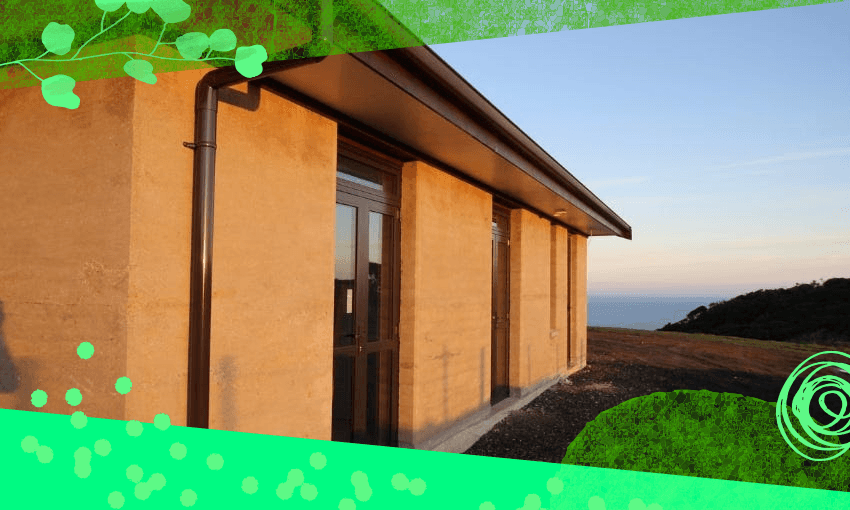One builder’s quest to find a culture of sustainability in construction.
This is an excerpt from our environmental newsletter Future Proof. Sign up here.
“Have you ever built a sandcastle?” asks Paul Geraets, founder of rammed earth building company Terra Firma. “Everybody has. Rammed earth is the same principle.”
Rammed earth is an ancient construction method, using locally sourced soil tamped into layers akin to manmade sedimentary rock. It’s pretty uncommon in New Zealand – less than 1% of all houses are earth buildings. But earth offers an alternative material to timber-steel-concrete, with sustainability creds that Geraets reckons make it worthy of more consideration.
As a young construction worker, Geraets wanted to feel more connected to a culture of sustainability. So when someone gave him a pamphlet on rammed earth construction in 1989, he knew he’d found his path. More than 30 years on, he’s been involved in constructing around 100 rammed earth homes in New Zealand, and has recently commissioned a book encouraging builders to “put down the hammer and pick up a rammer”.
“To me – and this has always been my philosophy – if we’re talking about ethics and sustainability, then we’re talking about durability,” says Geraets. “The houses we build should be fit-for-purpose for a long time, whereas the type of construction we’re doing at the moment isn’t designed to last long.” Rammed earth houses, on the other hand, have a long life expectancy – extending into hundreds of years.
One of the other environmental benefits of a rammed earth structure is the walls’ ability to “breathe” and regulate temperature naturally, as heat (or cool) is absorbed, stored, and percolates slowly through the thick walls. “These walls have the ability to store temperature, whether it’s warm or cold, and when you combine that with insulation, there is the opportunity to reduce energy costs significantly,” says Geraets.
Traditional rammed earth houses, constructed from soil sourced on site (or as close by as possible) also boast low embodied energy – that is, it doesn’t take much energy to make rammed earth (just quite a bit of labour).
However, modern methods require use of a cement additive to beef up strength and meet building codes, which adds to the material’s carbon footprint. How much bigger that emissions footprint is depends on how much cement is added, and whether the embodied carbon of cement-stabilised rammed earth stacks up against concrete or other materials is a topic of debate. Geraets acknowledges that cement is a “high-carbon component” and is hopeful that in future, alternative, lower carbon stabilisers will be developed.
Plus, it’s not so bad if you make sure a house stays standing for a really long time, Geraets reckons, “Ground zero for sustainability is durability.”


